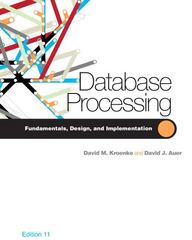Question
JAVA SUDOKU This class models a Sudoku puzzle that is unsolved, partially solved, or completely solved. The class has a 9x9 array of ints, called
JAVA SUDOKU
This class models a Sudoku puzzle that is unsolved, partially solved, or completely solved. The class has a 9x9 array of ints, called values. If a Sudoku square is empty, the corresponding cell in values is zero; otherwise the cell in values contains the number in the Sudoku square. The starter class has a ctor and a toString() method that you should not change. It also has 4 empty methods that you need to write: next9Grids(), isLegal(), isFull(), and equals(). Do not change their names, arg lists, or return types. The comments on the unfinished methods tell you all you need to know about what they should do. Its ok to add more methods to this class.
You dont need to provide this class with hashCode() or compareTo() methods. The equals() method is just so that you can compare your puzzle solutions to solutions in TestGridSupplier. (That is, you wont be collecting Grid instances into a hash set a tree set.)
STARTER CODE:
package sudoku;
import java.util.*;
public class Grid { private int[][] values;
// // DON'T CHANGE THIS. // // See TestGridSupplier for examples of input. // Dots in input strings represent 0s in values[][]. // public Grid(String[] rows) { values = new int[9][9]; for (int j = 0; j < 9; j++) { String row = rows[j]; char[] charray = row.toCharArray(); for (int i = 0; i < 9; i++) { char ch = charray[i]; if (ch != '.') values[j][i] = ch - '0'; } } } // // DON'T CHANGE THIS. // public String toString() { String s = ""; for (int j = 0; j < 9; j++) { for (int i = 0; i < 9; i++) { int n = values[j][i]; if (n == 0) s += '.'; else s += (char)('0' + n); } s += " "; } return s; } // // COMPLETE THIS // // // Finds an empty member of values[][]. Returns an array list of 9 grids that look like the current grid, // except the empty member contains 1, 2, 3 .... 9. Returns null if the current grid is full. // // Example: if this grid = 1........ // ......... // ......... // ......... // ......... // ......... // ......... // ......... // ......... // // Then the returned array list would contain: // // 11....... 12....... 13....... 14....... and so on 19....... // ......... ......... ......... ......... ......... // ......... ......... ......... ......... ......... // ......... ......... ......... ......... ......... // ......... ......... ......... ......... ......... // ......... ......... ......... ......... ......... // ......... ......... ......... ......... ......... // ......... ......... ......... ......... ......... // ......... ......... ......... ......... ......... // public ArrayList
} // // COMPLETE THIS // // Returns true if every cell member of values[][] is a digit from 1-9. // public boolean isFull() { } // // COMPLETE THIS // // Returns true if x is a Grid and, for every (i,j), // x.values[i][j] == this.values[i][j]. // public boolean equals(Object x) { }
Step by Step Solution
There are 3 Steps involved in it
Step: 1

Get Instant Access to Expert-Tailored Solutions
See step-by-step solutions with expert insights and AI powered tools for academic success
Step: 2

Step: 3

Ace Your Homework with AI
Get the answers you need in no time with our AI-driven, step-by-step assistance
Get Started


